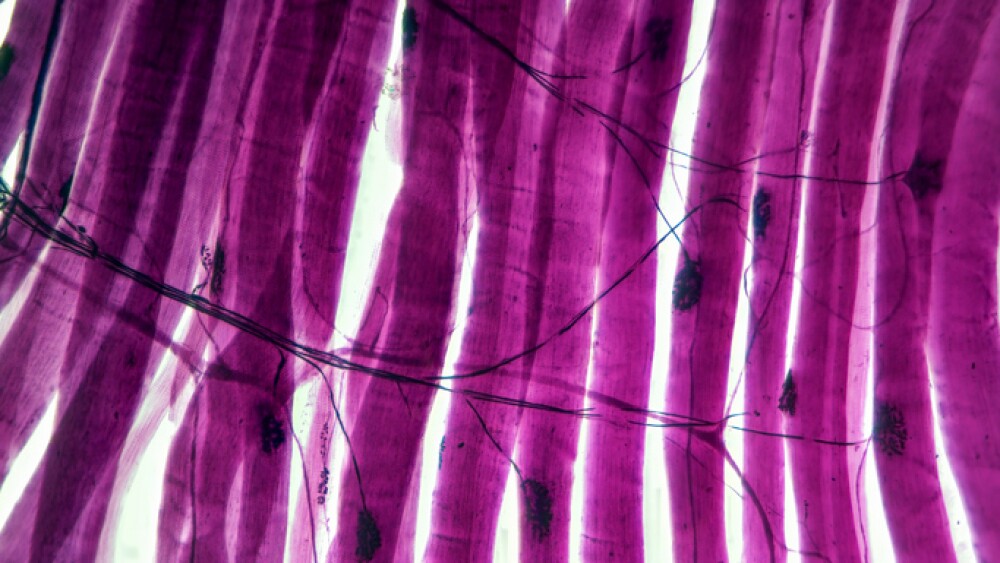Homology Medicines, Inc. (Nasdaq: FIXX), a genetic medicines company, announced today six presentations supporting its gene editing, gene therapy and GTx-mAb programs at the American Society of Gene & Cell Therapy (ASGCT) 26th Annual Meeting.
- New Preclinical Data Demonstrated Ability to Re-Dose with AAVHSCs Across Viral Clades, Potentially Expanding Possibilities of Genetic Medicine Programs in the Future -
- Presented Methods to Accelerate Identification of Genomic Sites that Result in Improved Homologous Recombination-Based Gene Editing Efficiency -
BEDFORD, Mass., May 16, 2023 (GLOBE NEWSWIRE) -- Homology Medicines Inc. (Nasdaq: FIXX), a genetic medicines company, announced today six presentations supporting its gene editing, gene therapy and GTx-mAb programs at the American Society of Gene & Cell Therapy (ASGCT) 26th Annual Meeting, including the first data from IND-enabling studies with HMI-104, the anti-C5 GTx-mAb development candidate for paroxysmal nocturnal hemoglobinuria (PNH). These preclinical data demonstrated that a one-time administration of HMI-104 resulted in sustained expression of C5 monoclonal antibody (C5mAb) levels, supporting the use of a one-time vectorized approach for PNH to enable continuous antibody production.
“Given the severity of PNH, which is a rare, acquired blood disorder, and the unmet need associated with chronically administered available therapies, HMI-104 could provide an important new one-time approach,” said Albert Seymour, Ph.D., President and Chief Executive Officer of Homology Medicines. “We are continuing to advance HMI-104 through IND-enabling studies as well as progress our GTx-mAb platform for ocular diseases, with potential for other indications with larger patient populations.”
Homology also presented for the first time non-clinical data that showed the potential to re-dose liver-targeted AAVs, including the Company’s AAVHSCs, across different clades of viruses without suppressing or modulating the immune system. Additionally, Homology highlighted methods to identify genomic sites with improved homologous-recombination (HR)-based gene editing integration, which could be used to enhance and streamline development of future product candidates.
Highlights from Homology’s ASGCT 2023 Presentations
HMI-104: GTx-mAb Development Candidate for PNH
Homology presented results from two dose range-finding studies in the poster, “Preclinical Studies with HMI-104, an AAVHSC Vectorized C5 Monoclonal Antibody, for the Treatment of PNH.” In both NOD SCID and humanized liver murine models, a single intravenous (I.V.) dose of HMI-104 resulted in:
- Sustained, dose-dependent expression of C5mAb, as well as durable liver vector genome and mRNA levels; and
- Inhibition of hemolysis as demonstrated via an ex vivo assay, including in the presence of human C5.
AAVHSC Re-Dosing
In the poster, “Re-Dosing of Liver-Targeted AAV Within and Across Clades in Mice: Effects of Neutralizing Antibodies and Vector-Specific Factors,” Homology reported new data from preclinical studies delivering liver-specific gene expression vectors for PAH or FIX genes in the murine model of phenylketonuria (PKU), which showed:
- Dosing with AAV5, AAV6 (Clade A) or AAV8 (Clade E), then followed by AAVHSC15 or AAVHSC17 (Clade F), or vice versa, resulted in successful transduction and gene expression;
- Re-dosing within the same clades was not successful; and
- The time between doses and liver capacity may be related to the success of the second dose.
AAVHSC-Mediated, Homologous Recombination-Based Gene Editing
In the poster, “The Method for Identification and Characterization of Sites of Homology Directed Strand Cross-Over Using rAAV Integration Vectors,” Homology shared methods to characterize regions in the genome that demonstrate higher levels of recombination, which can lead to higher efficiency HR-based gene editing.
AAVHSC Biodistribution
In the poster, “Ocular Biodistribution of AAVHSCs Across Species and Routes of Administration,” data showed that AAVHSCs target a diverse array of ocular cell types, which could allow for versatility in the development of genetic medicines. Specifically, AAVHSC transduction was shown following different routes of administration in the following cell types:
- A subretinal dose in murine, non-human primate (NHP) and porcine models: photoreceptors and retinal pigment epithelium (RPE);
- Intravitreal and suprachoroidal doses: murine photoreceptors and RPE;
- Intravitreal and intracameral doses of single-stranded AAVHSC: murine trabecular meshwork; and
- Human photoreceptors ex vivo.
Immunosuppression Regimen Used in Ongoing Clinical Trials for PKU and Hunter Syndrome
In the poster, “Targeted Approach to Immunosuppression with AAV Gene Therapy: Nonclinical Support of Clinical Approaches,” Homology presented data from NHP studies with an AAVHSC expressing PAH, which showed the combination of a targeted T-cell inhibitor and steroid reduced neutralizing antibody formation and increased gene expression. These data support the immunosuppression regimen used in Homology’s ongoing gene editing and gene therapy clinical trials.
HMI-204: Gene Therapy Candidate for MLD
In the poster, “Gene Therapy Candidate for Metachromatic Leukodystrophy (MLD): Optimization of HMI-202 Leading to HMI-204 Nomination,” Homology highlighted preclinical data on its optimized HMI-204 gene therapy candidate for MLD. In addition to improvements in productivity and packaging, the data showed that a single I.V. infusion of HMI-204 in the murine MLD model resulted in:
- Successful crossing of the blood-brain-barrier and broad and sustained systemic biodistribution;
- ARSA activity levels anticipated to prevent the motor deficit in the model;
- Expression of near-normal ARSA activity levels following active liver growth; and
- Detection of active ARSA in the serum.
These posters are available on the Publications and Presentations page on Homology’s website.
About Homology Medicines, Inc.
Homology Medicines, Inc. is a clinical-stage genetic medicines company dedicated to transforming the lives of patients suffering from rare diseases by addressing the underlying cause of the disease. The Company’s clinical programs include HMI-103, a gene editing candidate for phenylketonuria (PKU); HMI-203, an investigational gene therapy for Hunter syndrome; and HMI-102, an investigational gene therapy for adults with PKU. Additional programs focus on paroxysmal nocturnal hemoglobinuria (PNH), metachromatic leukodystrophy (MLD) and other diseases. Homology’s proprietary platform is designed to utilize its family of 15 human hematopoietic stem cell-derived adeno-associated virus (AAVHSCs) vectors to precisely and efficiently deliver genetic medicines in vivo through a nuclease-free gene editing modality, gene therapy, or GTx-mAb, which is designed to produce antibodies throughout the body. Homology established an AAV manufacturing and innovation business in partnership with Oxford Biomedica, which was based on Homology’s internal process development and manufacturing platform. Homology has a management team with a successful track record of discovering, developing and commercializing therapeutics with a focus on rare diseases. Homology believes its initial clinical data and compelling preclinical data, scientific and product development expertise and broad intellectual property position the Company as a leader in genetic medicines. For more information, visit www.homologymedicines.com.
Forward-Looking Statements
This press release contains forward-looking statements. We intend such forward-looking statements to be covered by the safe harbor provisions for forward-looking statements contained in Section 27A of the Securities Act of 1933, as amended, and Section 21E of the Securities Exchange Act of 1934, as amended. All statements contained in this press release that do not relate to matters of historical fact should be considered forward-looking statements, including without limitation statements regarding: our expectations surrounding the potential, safety, efficacy, and regulatory and clinical progress of our product candidates, including HMI 104 for the treatment of PNH and other diseases; the potential of our gene therapy and gene editing platforms, including our GTx-mAb platform; our plans and timing for the release of additional preclinical and clinical data; our plans to progress our pipeline of genetic medicine candidates and the anticipated timing for these milestones; and our position as a leader in the development of genetic medicines. The words “believe,” “may,” “will,” “estimate,” “potential,” “continue,” “anticipate,” “intend,” “expect,” “could,” “would,” “project,” “plan,” “target,” and similar expressions are intended to identify forward-looking statements, though not all forward-looking statements use these words or expressions. These statements are neither promises nor guarantees, but involve known and unknown risks, uncertainties and other important factors that may cause our actual results, performance or achievements to be materially different from any future results, performance or achievements expressed or implied by the forward-looking statements, including, but not limited to, the following: we have and expect to continue to incur significant losses; our need for additional funding, which may not be available; failure to identify additional product candidates and develop or commercialize marketable products; the early stage of our development efforts; potential unforeseen events during clinical trials could cause delays or other adverse consequences; risks relating to the regulatory approval process; interim, topline and preliminary data may change as more patient data become available, and are subject to audit and verification procedures that could result in material changes in the final data; our product candidates may cause serious adverse side effects; inability to maintain our collaborations, or the failure of these collaborations; our reliance on third parties, including for the manufacture of materials for our research programs, preclinical and clinical studies; failure to obtain U.S. or international marketing approval; ongoing regulatory obligations; effects of significant competition; unfavorable pricing regulations, third-party reimbursement practices or healthcare reform initiatives; product liability lawsuits; securities class action litigation; the impact of the COVID-19 pandemic and general economic conditions on our business and operations, including our preclinical studies and clinical trials; failure to attract, retain and motivate qualified personnel; the possibility of system failures or security breaches; risks relating to intellectual property; and significant costs incurred as a result of operating as a public company. These and other important factors discussed under the caption “Risk Factors” in our Quarterly Report on Form 10-Q for the quarter ended March 31, 2023 and our other filings with the Securities and Exchange Commission could cause actual results to differ materially from those indicated by the forward-looking statements made in this press release. Any such forward-looking statements represent management’s estimates as of the date of this press release. While we may elect to update such forward-looking statements at some point in the future, we disclaim any obligation to do so, even if subsequent events cause our views to change.
Company Contacts:
Cara Mayfield
Vice President, Patient Advocacy
and Corporate Communications
cmayfield@homologymedicines.com
781-691-3510
Investor Contact:
Bill Slattery, Jr.
Vice President, Investor Relations
bslattery@homologymedicines.com
781-301-7277





